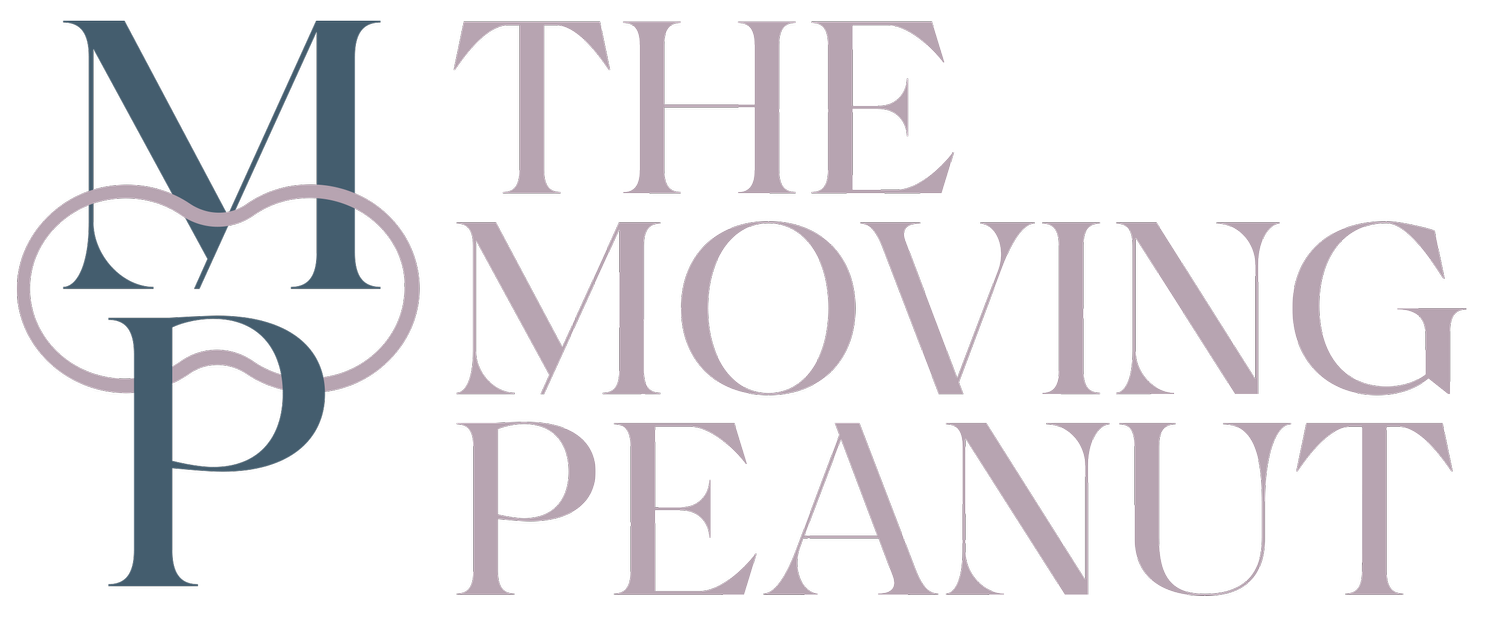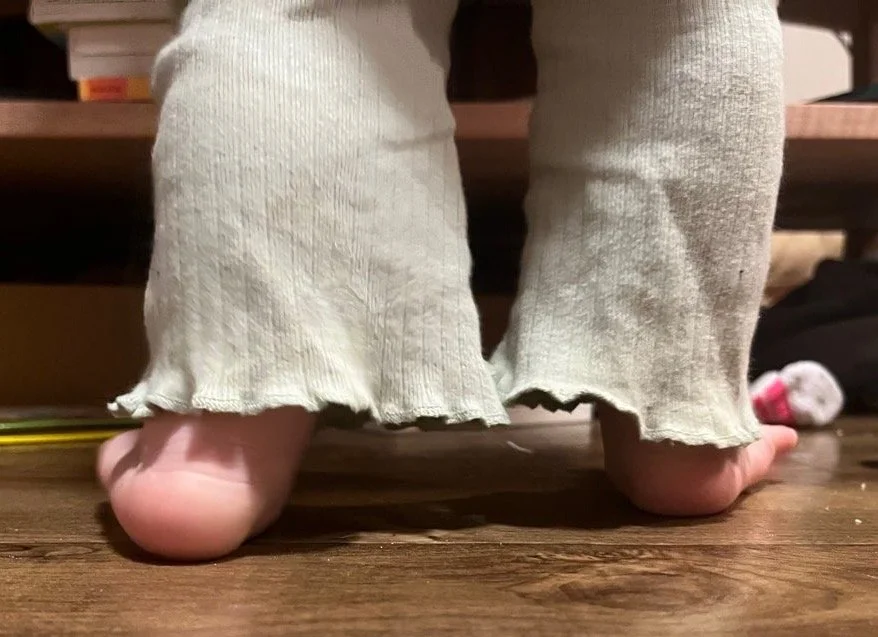Does My Baby Have Low Tone or High Tone? What Muscle Tone Actually Means
Written By: Dr. Alli Chisholm, PT, DPT
Disclaimer: This post may contain affiliate links. If you purchase through my links, I may earn a small commission at no extra cost to you. I only recommend products I personally use and love with my own family and clients.
When I was on a virtual call with a mom recently, she asked me something I hear all the time:
“So… I went down a Sub-Reddit rabbit hole. And now I’m wondering—does my baby have low tone or high tone? Could this be affecting his rolling and other things?”
If you've ever spiraled after googling “muscle tone,” you’re not alone. Let’s unpack this together—without shame, fear, or overcomplication.
First: What Even Is Muscle Tone?
Muscle tone is the natural tension in our muscles when we’re at rest. It’s not strength. It’s not how much a baby can lift, push, or pull. It’s more like the baseline readiness in the body—what helps babies hold themselves upright, start to move, and keep moving.
It’s often confused with strength, but here’s the truth:
A baby can have low tone and still be strong.
A baby can have high tone and still struggle to meet milestones.
Muscle tone does not equal muscle strength.
Let’s break it down in a way that’s actually helpful. And if you’re curious how everyday choices (like clothing) affect milestones, I also share more in my post on dressing your baby for developmental success.
There’s a Range—Not a Label
Think of muscle tone like a spectrum. There’s no perfect number. No red flag cutoff. Just variations that can impact how a baby moves, rests, and learns new skills.
Low Muscle Tone (Hypotonia)
Muscles may feel soft or floppy at rest
Babies might feel extra “loose” or super flexible when picked up
They often have to work harder to sit up, hold positions, or keep their head up
They may fatigue more quickly (you may see this especially during tummy time since babies with lower tone sometimes struggle to lift and hold their head up)
You might notice delayed gross motor milestones or slower transitions
Example: A baby who slouches or leans when sitting upright
And just to say it again louder for the parents in the back: this does not mean your baby is weak. It means they may need more effort to activate their muscles and build endurance over time.
“Normal” or Typical Muscle Tone
Muscles have the “typical” amount of resting tension
Movements usually look smooth and coordinated
Babies can balance and transition with relative ease
There’s a range within “normal”—not one magic number
High Muscle Tone (Hypertonia)
Muscles may feel stiff or tight, even when resting
Movements can look rigid, jerky, or tense
Arms or legs might be harder to bend or relax
Sometimes linked with neurological conditions—but not always
Example: A toddler who walks on their toes due to tight calf muscles
High tone doesn’t mean your baby is strong—it just means their muscles are constantly in a more contracted state, which can make transitions and mobility trickier. Sometimes this stiffness also leads to a side preference or even a flat spot on the head, which I explain more in my post on head flattening prevention.
A Visual That Helps My Families
This isn’t a clinical measurement, but it’s a helpful tool I share during virtual sessions.
Hold your fingers about five inches apart — that represents typical resting muscle tone.
Now stretch your fingers to about seven inches apart — that’s hypotonia (longer resting muscle that requires more effort to activate).
Now bring your fingers closer — about two or three inches apart — that’s hypertonia (shorter, tighter resting muscle that may resist lengthening).
Babies with low tone work harder to activate movement. Babies with high tone may struggle with stiffness, decreased range of motion, or rigidity.
A Story I’ll Never Forget
I worked with a family whose baby girl had very noticeable low tone from the beginning. At just a few months old, she wasn’t holding her head up well, and progress felt slow. We made the choice to explore every possibility—bloodwork, specialist consults, early intervention support.
Everything came back clear. No diagnosis. Just a baby with low tone who needed the right support and time.
Even still, some providers assumed there had to be a diagnosis—mentioning Down syndrome or similar concerns—because of how her tone presented. But we had already done the testing. And most importantly, she was making steady progress.
Now, that same baby is a thriving toddler. She’s walking, running, climbing, and keeping up with her peers. Yes, she’s still working on building joint stability and strength—but she’s doing it.
Tone doesn’t define a child’s ability. It doesn’t determine their future. It’s just one piece of the puzzle.
Muscle Tone and Muscle Strength Are Not the Same Thing
Let’s clear this up once and for all:
Low tone does not mean weak
High tone does not mean strong
Tone is how ready a muscle is at rest.
Strength is how powerful a muscle is during movement.
Babies with low tone often have to work harder just to get started. That effort is real, and it takes energy. It’s not about trying harder—it’s about how their body is wired.
Common Myths I Hear All the Time
“My baby will grow out of it.”
Tone often stays the same—but strength, control, and coordination can absolutely improve.
“They’re not trying hard enough.”
Low tone can make basic movements much more challenging. These babies are often working harder than we realize.
“Tone always means there’s a diagnosis.”
Nope. Differences in tone do not automatically mean something is wrong or that there’s an underlying condition.
So… Does Muscle Tone Predict My Baby’s Abilities?
Not necessarily.
Many babies with high or low tone crawl, sit, walk, and play just like their peers—on their own timeline. It’s not about being ahead or behind. It’s about how we support their individual body, brain, and learning process.
How You Can Support Your Baby
Physical or occupational therapy can be incredibly helpful
Celebrate inchstones as much as milestones
Give your baby time to rest and recover—especially after effortful play or tummy time
Let them explore movement in a way that feels natural for their body
Create a “yes space” for your baby, where they can explore, move, and rest safely
Suggested Reading for You
If this post is resonating, you might also love these:
A Final Note From Me to You
Your baby’s tone doesn’t define them. It doesn’t limit what they’re capable of or who they’re becoming.
They are capable.
They are growing.
They are learning every single day.
With love, time, and the right support—they can do incredible things.
Wondering About Your Baby’s Muscle Tone?
If your baby is under 12 months and you’re noticing floppiness, stiffness, fatigue, or delayed milestones—or even if you just have a gut feeling that something’s a little off—I’d love to help.
Book a virtual pediatric wellness assessment ($200)
Or schedule a free 15-minute inquiry call to talk it through together.
You’re not alone in this. Let’s get you clarity, confidence, and a personalized plan that actually makes sense for your baby.
-
References:
National Health Service. (2019, October 18). Hypotonia (poor muscle tone) in babies. https://www.nhs.uk/conditions/hypotonia/
Cerebral Palsy Guide. (2020). Hypertonia. https://www.cerebralpalsyguide.com/about-cerebral-palsy/symptoms/hypertonia/
Morin, A. (2021). Muscle tone: What it is and how it affects motor skills. Understood.org. https://www.understood.org/en/articles/muscle-tone-what-it-is-and-how-it-affects-motor-skills

